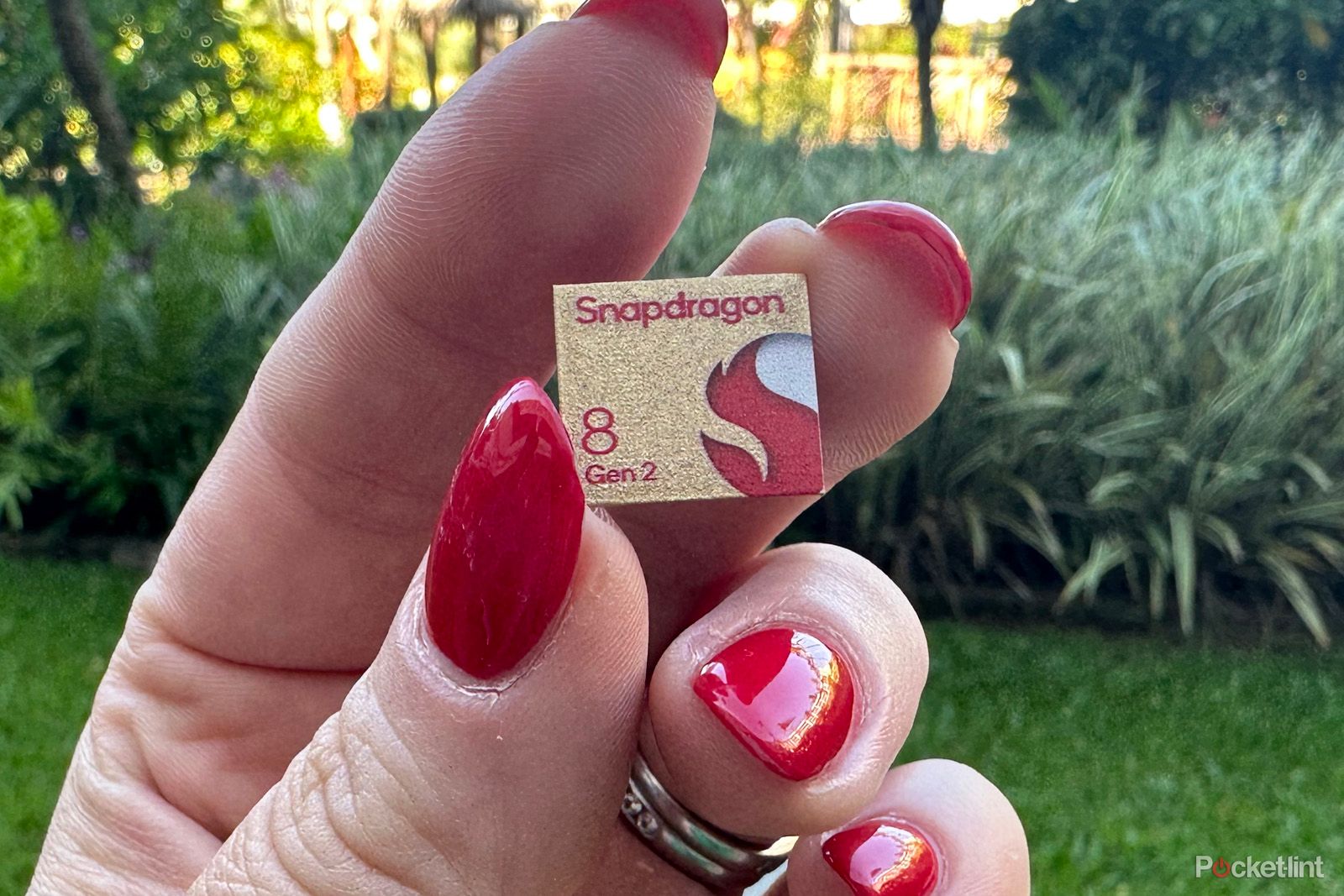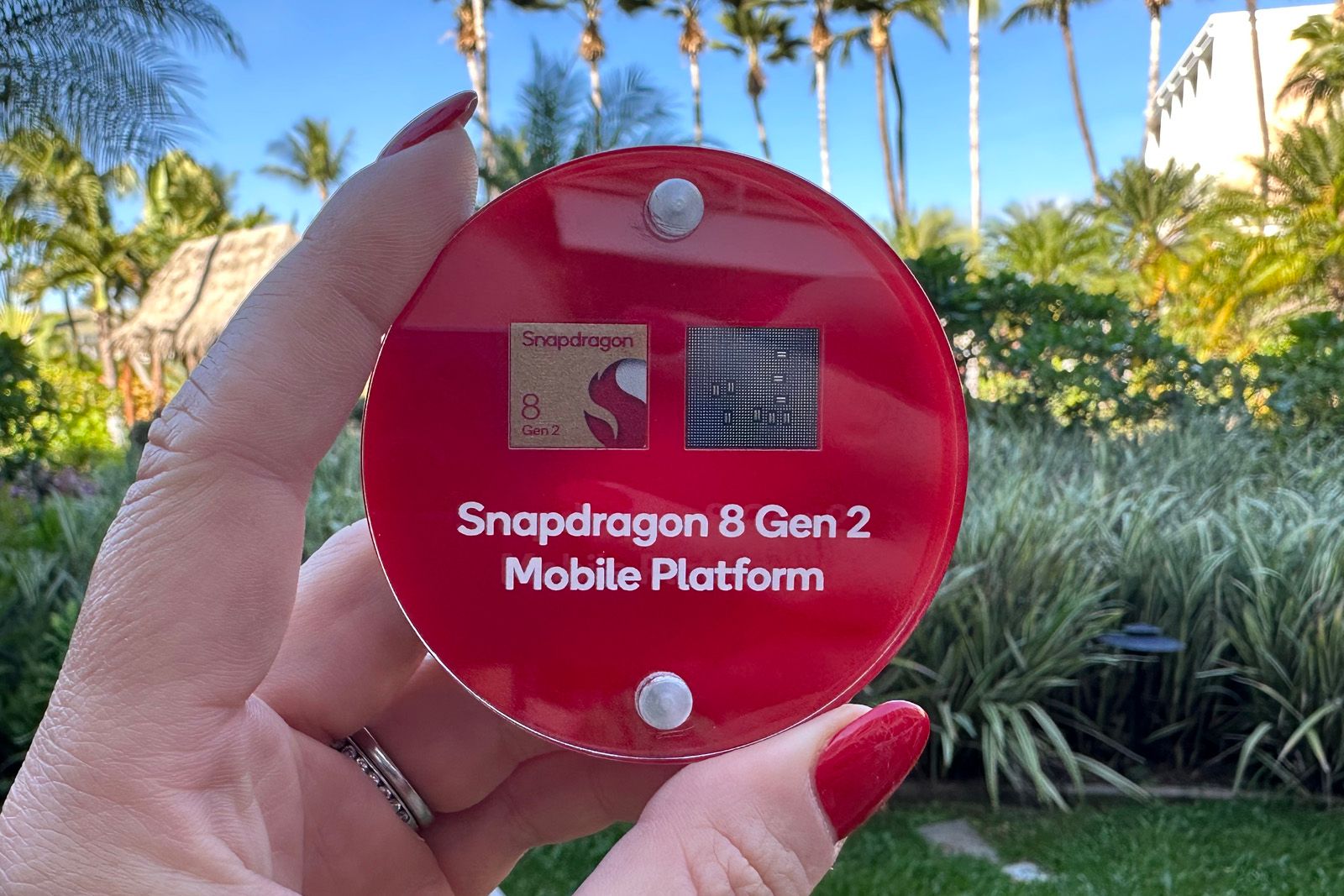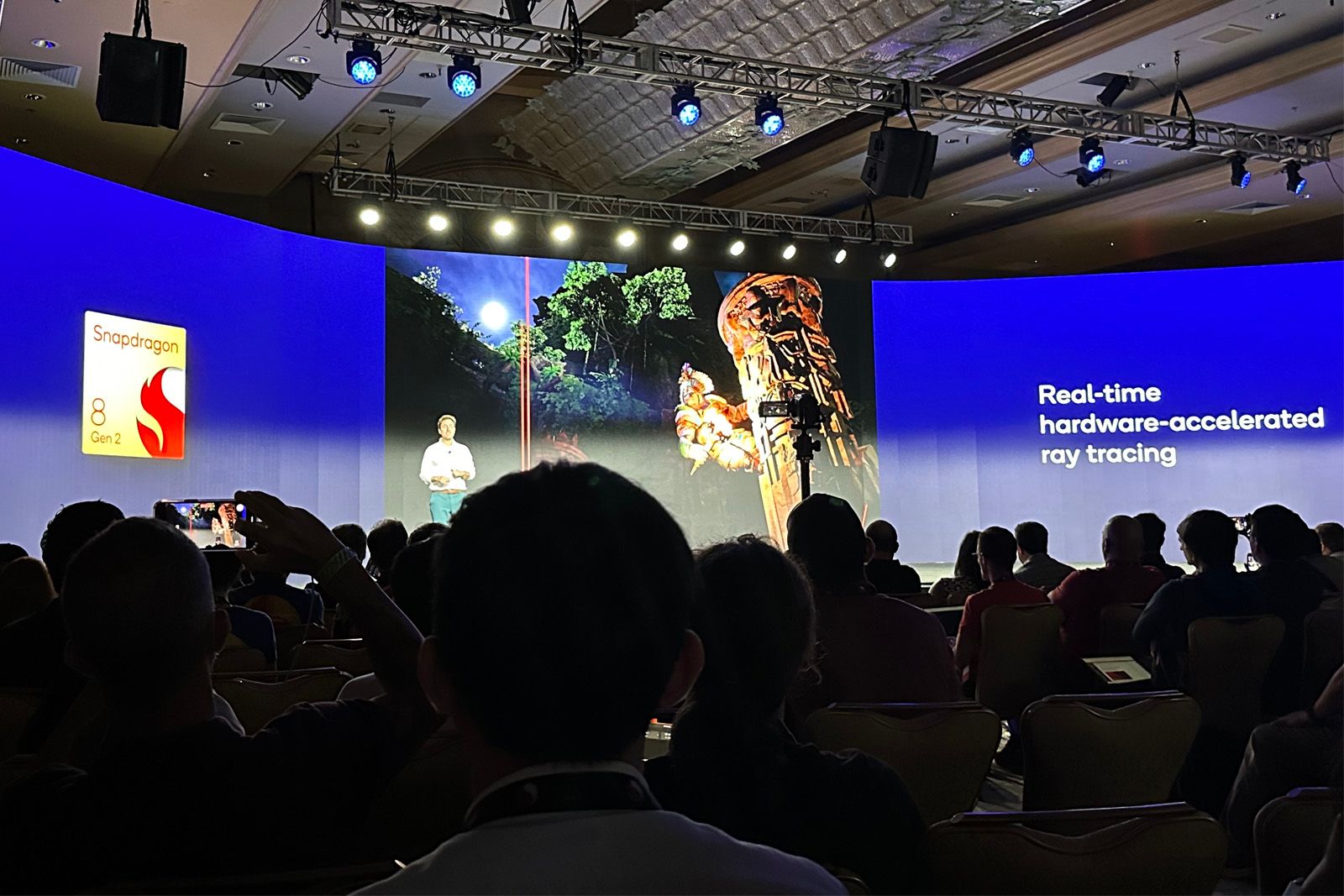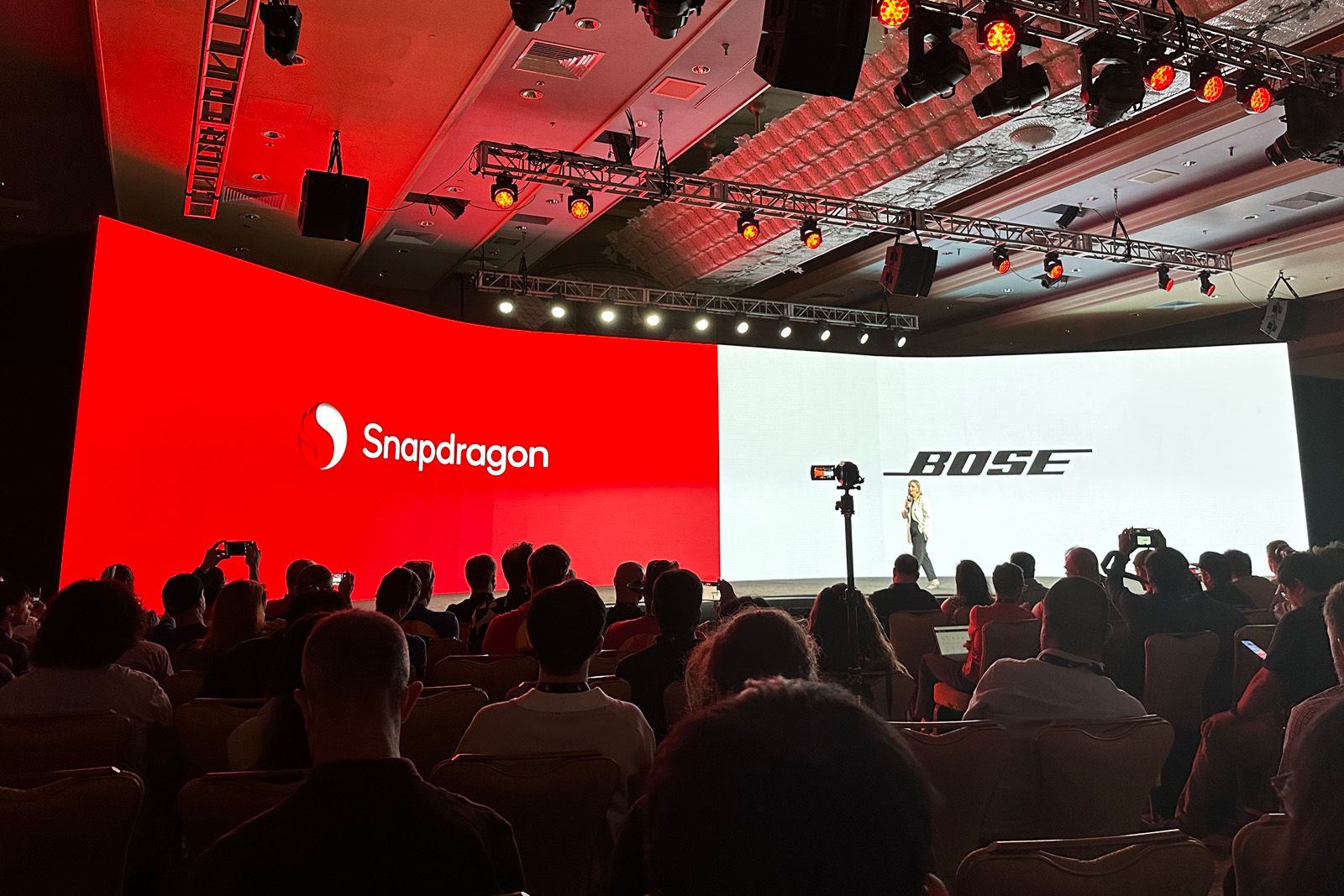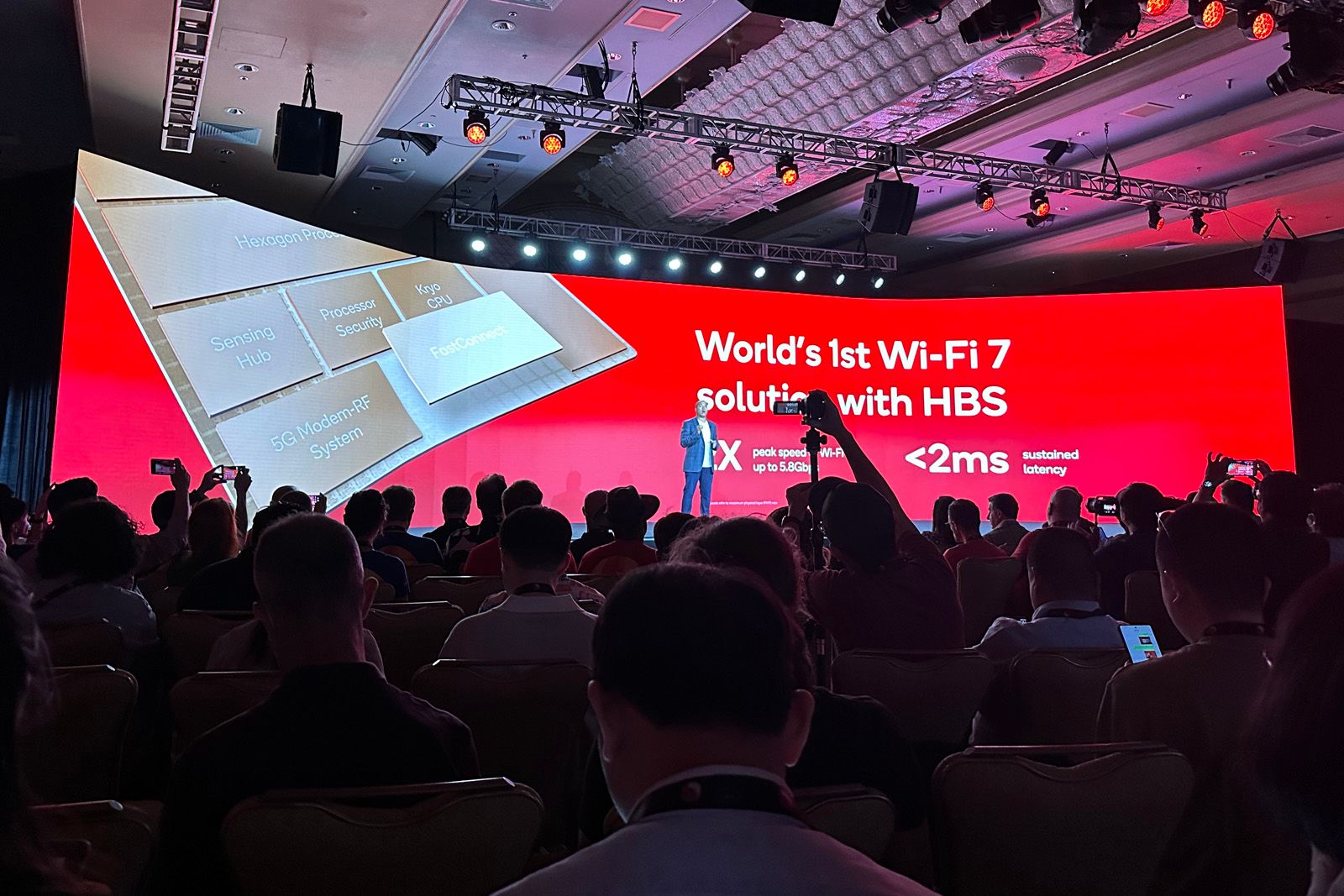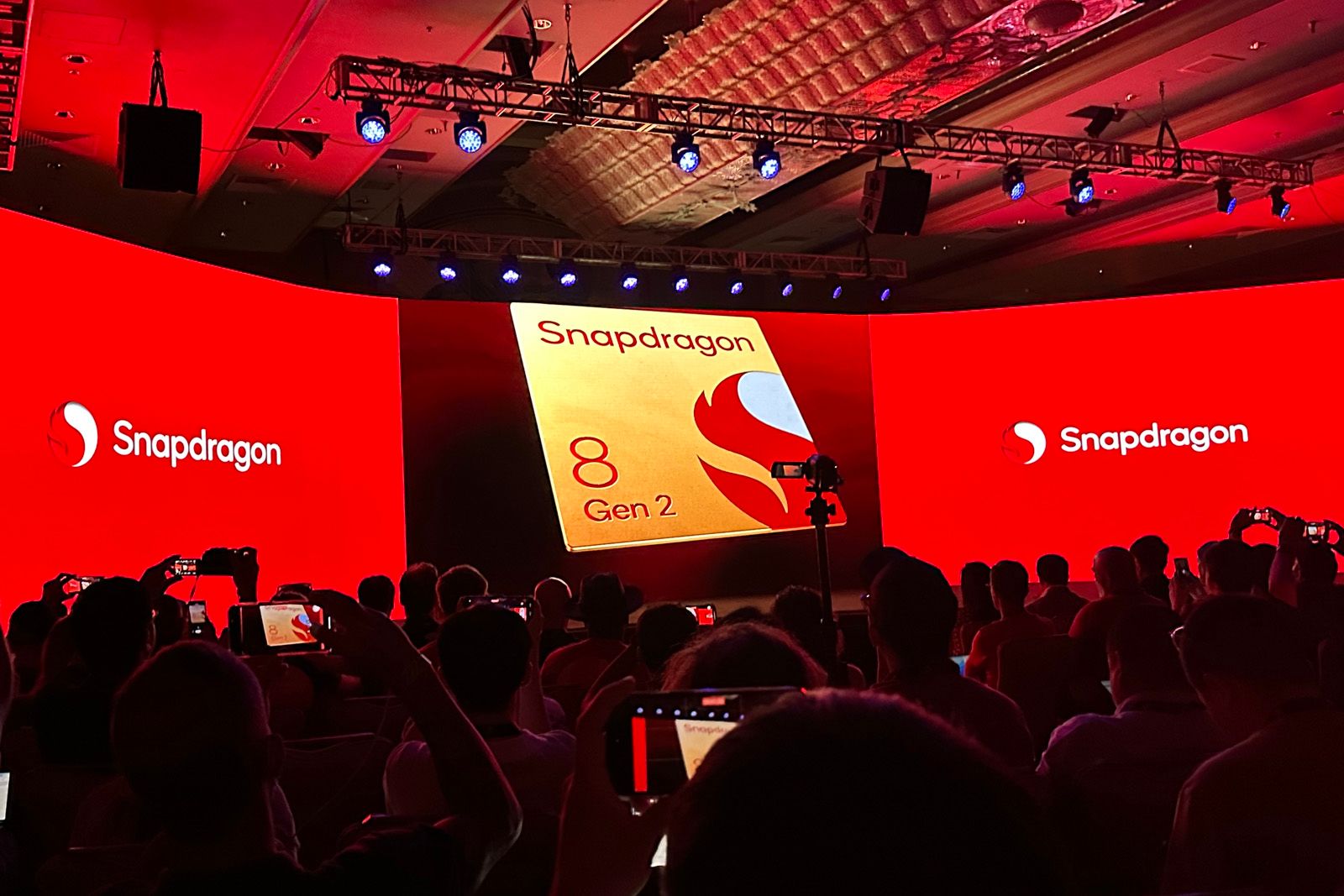Qualcomm simplified the naming structure for its flagship Snapdragon mobile platform in 2022, moving from the incremental numbering system to Snapdragon 8 Gen 1.
For 2023 therefore, the flagship mobile platform is called the Snapdragon 8 Gen 2, maintaining that "8" represents Qualcomm's top-tier power for mobile but we're now in the second generation of the platform and there are a number of improvements, along with new capabilities and features.
What does the Snapdragon 8 Gen 2 platform have to offer flagship handsets of the immediate future though? Here's our breakdown of its specification, how that will relate to specific features, and why they are something to be excited about.
How powerful is Snapdragon 8 Gen 2?
- 4nm system-on-chip (SoC)
- Qualcomm Hexagon Processor with Hexagon Direct Link and Sensing Hub
- Kyro CPU: Arm Cortex-X3 to 3.2GHz
- LPDDR5X memory support, to 16GB
- Qualcomm Adreno GPU
Following on from the Snapdragon 8 Gen 1 that is based on a 4nm process, the Snapdragon 8 Gen 2 continues with 4nm with 64-bit architecture. The 4nm process means a shorter travel for current within the CPU and therefore greater efficiency and power saving potential compared to a 5nm process.
There have been some changes to the structure though. The Snapdragon 8 Gen 2 offers a main prime core up to 3.2Ghz, four performance cores up to 2.8Ghz and three efficiency cores up to 2.0Ghz. That means there's an extra performance core and one less efficiency core compared to the Snapdragon 8 Gen 1, which Qualcomm said is to aid sustained gaming performance, as well as help the performance of 64-bit apps.
It's said the Snapdragon 8 Gen 2 is 35 per cent faster in performance compared to the Snapdragon 8 Gen 1 and 40 per cent more power efficient in terms of CPU.
Like the Snapdragon 8 Gen 1, the Snapdragon 8 Gen 2 supports LPDDR5X RAM, which is particularly useful for rapid processing of computational tasks - the kind of back-and-forth that happens with artificial intelligence (AI) processing for example.
In terms of raw power, the Qualcomm Hexagon processor embodies an Arm Cortex-X3 (to 3.2GHz) at its most powerful. There's a dedicated AI engine called the Sensing Hub which has dual-AI processors and Qualcomm has said offers over four times the AI performance compared to the Snapdragon 8 Gen 1 processor and 50 per cent more memory.
What features does Snapdragon 8 Gen 2 support?
Like with the Snapdragon 8 Gen 1, AI continues to be a huge part of Qualcomm's sell in Snapdragon 8 Gen 2 - even more so this year than last year, but there are a number of other core features supported by the new mobile platform.
So what can you expect from flagship handsets that utilise the Snapdragon 8 Gen 2 platform? Here's a breakdown of the key elements.
Cameras
- 200-megapixel camera resolution support
- Triple 18-bit image signal processors (ISP)
- AV1, H.265 & VP9 decoder
- 8K 10-bit HDR video
In 2022, Qualcomm introduced Snapdragon Sight Technology - the company's first 18-bit image signal processor - enabling the 8 Gen 1 to support a whole host of imaging potential on flagship handsets.
Like the Snapdragon 8 Gen 1, the Snapdragon 8 Gen 2 includes support for 200-megapixel resolution, along with codec support for H.265 and VP9. Snapdragon Gen 2 adds AV1 too.
The trio of 18-bit ISPs mean the platform - both the Snapdragon 8 Gen 1 and Gen 2 -can capture an alleged 4096 times more camera data than earlier 14-bit processors of previous platforms. That means there's a lot more information within images, which translates to greater high dynamic range (HDR) and colour potential.
The Snapdragon 8 Gen 2 does enhance the capabilities of the Gen 1 though, with a Cognitive ISP that processes up to eight layers at a hardware level - think of it like Adobe Photoshop layer processing. The Cognitive ISP and the Hexagon engine are able to identify objects, from grass to sky, skin to lips, hair to bodies and apply a custom treatment to each layer on device rather than relying on software processing.
Qualcomm calls it real-time Segmentation Filter and it is designed to enhance images and video by sharpening where necessary, adding vibrancy, changing saturation, depending on what is detected in the image or video. For example, it can distinguish between skin and your lips and hair, or it might detect glasses in a photo and take away glare. It has a lot of potential.
Meanwhile, like the Snapdragon 8 Gen 1, the Gen 2 has a 3.2Gigabit pipeline that means lots of data processing: for burst shooting there's support for 30 frames per second capture at a massive 108-megapixel output; for video you can shoot 8K in 10-bit HDR, while having enough capacity remaining to take 64-megapixel stills simultaneously.
Elsewhere, there's something called Always-sensing camera that will not only allow a device to scan a QR code when it is idle, for example, but it will also sense when someone else comes into your selfie shot, switching your notifications off for privacy.
Display
- 144Hz display refresh rate support at QHD+ resolution
- 60Hz refresh at 4K resolution (incl. external display)
- HDR10 & HDR10+
Despite Ultra HD (4K) screen resolutions not being hugely adopted on in flagship devices, given how draining they can be on battery life, Qualcomm still supports 4K displays with Snapdragon 8 Gen 2, including for external displays, as it did with the Qualcomm Snapdragon 8 Gen 1.
There is support for QHD+ resolution to run at up to 144Hz refresh rate maximum. That'll mean super-smooth visuals at a significant resolution. For external displays, the Snapdragon 8 Gen 2 will support 4K up to 60Hz.
High dynamic range (HDR) leaves almost no stone unturned, too, with support for HLG, HDR10, HDR10+, HDRVivid and Dolby Vision formats. If a display has a high degree of brightness then visuals will no doubt pop.
Gaming
- Adreno GPU, 25% faster than predecessor
- Hardware-Accelerated Ray Tracing
- Vulkan 1.3 API support
Gaming is an increasingly big business on mobile - and Qualcomm definitely knows it. The Snapdragon 8 Gen 2 has plenty of potential here - as you can see from the fast refresh rate handling, LPDDR5X RAM support and CPU power.
The big news here though, is real-time Hardware-Accelerated Ray Tracing, which should make games look more realistic on smartphones, with better presented lighting and shadows for example. There is also support for Unreal Engine 5 and Metahuman framework, which is said to produce photorealistic human characters for unbeatable immersion.
Qualcomm has suggested the Snapdragon 8 Gen 2's Adreno GPU will bring with it a 25 per cent speed increase over its outgoing predecessor, coupled with 45 per cent lower power consumption. This should equate to better gaming experiences with less intensity on the battery, so you can game for longer.
Sound
- Lossless music streaming
- 48ms latency
- Dynamic Spatial Audio
When it comes to audio, there are some enhancements to Snapdragon Sound thanks to the Snapdragon 8 Gen 2, including Dynamic Spatial Audio. It's a technology offered by Apple in its AirPods 3 and AirPods Pro, and it puts you in the centre of sound coming from your smartphone, no matter which way you turn your head.
The Snapdragon 8 Gen 2 also offers lossless music streaming through Bluetooth LE though at 48Hz, which is more than what Bluetooth LE has the capacity to offer. That means that - for devices that adopt Snapdragon Sound - you will be able hear excellent quality audio, wherever you are, with the sound quality adapting to your environment and the interferences around you.
There's also support for low-latency Bluetooth streaming when gaming. Qualcomm has said there is a 48ms latency for "tap to bang", which means the time it takes between you tapping your screen while gaming to the sound you hear. This is pretty low and should make for a decent gaming experience.
Connectivity
- Snapdragon X70 5G Modem-RF System
- 5G mmWave and Sub 6GHz support
- Wi-Fi 7/ax up to 5.8 Gbps
- aptX Adaptive & Lossless
- Bluetooth 5.3
Of all the areas where Qualcomm really leads the pack, however, it's with its 5G connectivity. Snapdragon 8 Gen 2 utilises the X70 modem, which is the first mobile platform with a dedicated 5G AI processor.
Qualcomm's FastConnect 7800 Mobile Connectivity System allows for 5G Dual-SIM Dual-Active (DSDA), which enables the simultaneous use of two 5G+5G or 5G+4G SIM cards for great flexibility.
You'll get support for speeds up to 10Gbps, and there is support for both mmWave and Sub-6GHz 5G technologies. That's likely to be more important for customers in the USA, where mmWave adoption is suspected to increase, but Qualcomm's intelligent way of aggregating the two formats in one is certainly a step ahead.
In short: Snapdragon 8 Gen 2 is all about super-fast speeds while on the go, with an unparalleled 5G offering.
Much of the time, of course, you'll likely be using Wi-Fi when indoors. Here the platform supports Wi-Fi 7 for speedy connectivity at up to 5.8 Gbps - if, that is, the connected router can support it.
Bluetooth 5.3 handles wireless connectivity, while Snapdragon Sound Technology supports the company's aptX Voice, aptX Adaptive, aptX Lossless, and LE audio protocols. That means with the correct high-quality source and a capable enough headset, you'll be able to achieve Hi-Res Audio playback - and the adaptive nature of the tech means you'll always be getting the best on offer depending on what you're using.
When will Snapdragon 8 Gen 2 devices launch?
Qualcomm said we would see Snapdragon 8 Gen 2 devices arrive before the end of 2022. Given its high-end nature, it'll no doubt be the reserved for premium flagships smartphones. Confirmed partners include Sony, Motorola, Xiaomi, Oppo and OnePlus. Samsung was not on the list but it is widely rumoured the Snapdragon 8 Gen 2 will appear on the Galaxy S23 series due to launch in the early part of 2023.
Pocket-lint is at the Snapdragon Tech Summit where Oppo confirmed the next Find X smartphone would feature the Snapdragon 8 Gen 2 platform, but plenty of choices from multiple brands are expected in 2023.

